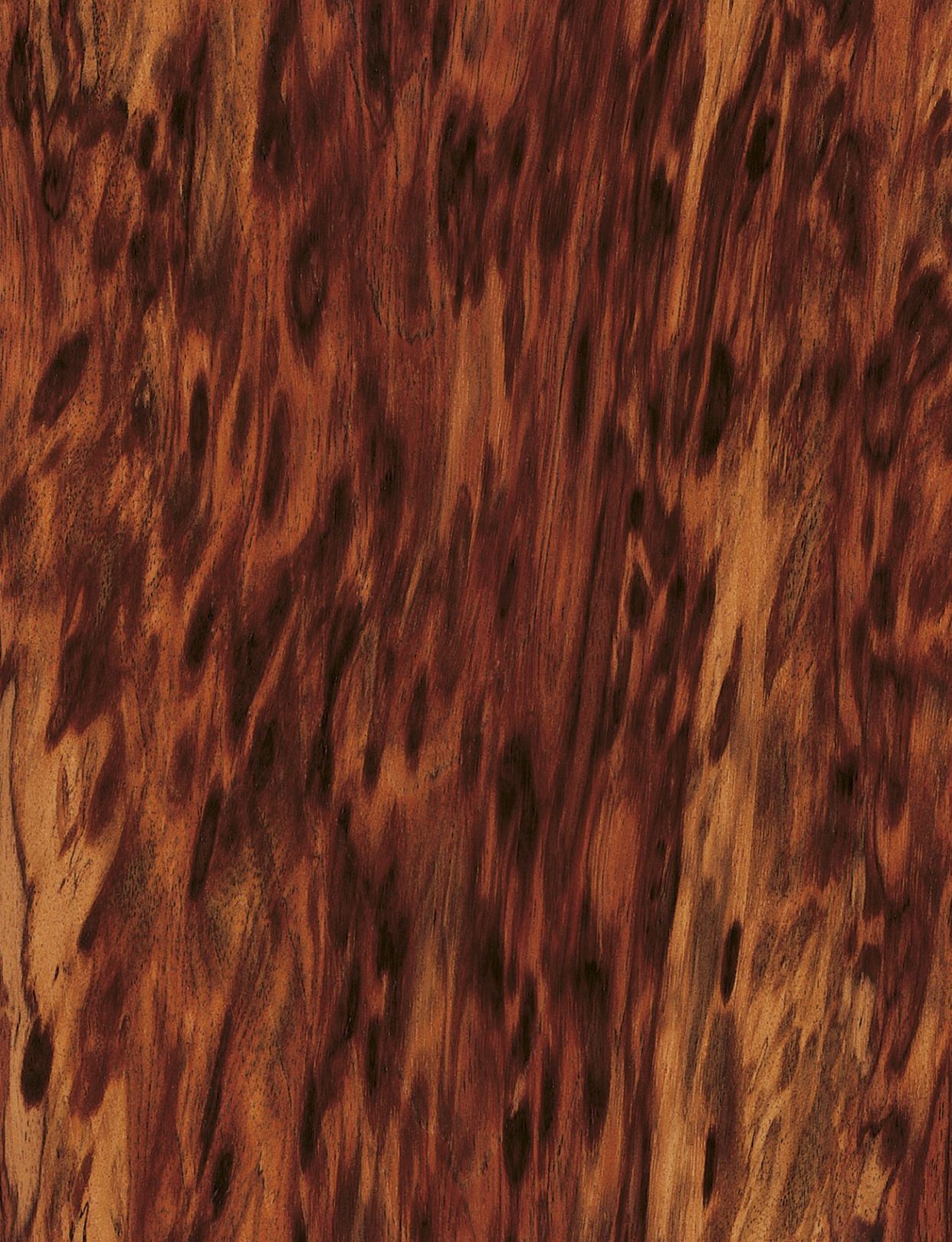
Special Etimoe
Copaifera salicounda

Trade Names
Etimoe, Tigerwood
Origin
West Africa
Range
From Guinea to the Ivory Coast and Ghana to Nigeria. Grows alone and spread throughout the lower tropical rain forests. To some extent also in groups on the Ivory Coast.
Uses
Etimoe with its normal wood pattern is hardly used in Central Europe as face veneer, more so in Southern Europe but then for inexpensive furniture. Wood patterns, like the one shown on the opposite page, must be considered special logs and are suitable for high quality architectural woodwork.
Properties
Etimoe numbers among the many African wood species known as mass lumber which due to their uniform and textureless patterns are considered being inferior quality wood. However, special wood patterns can be found (see illustration) which can produce very attractive surfaces.
Machining
Working is not made particularly difficult by the resin content, but carbide-tipped tools should be used.
Seasoning
Etimoe must be very slowly and carefully dried to prevent inner tension.
Finishing
The wood takes surface treatment well, including polishing, but the resin must be removed before finishing.
Jointing
Jointing presents no problems when the surfaces are free of resin. It is of advantage to pre-drill screw joints to prevent splitting.

